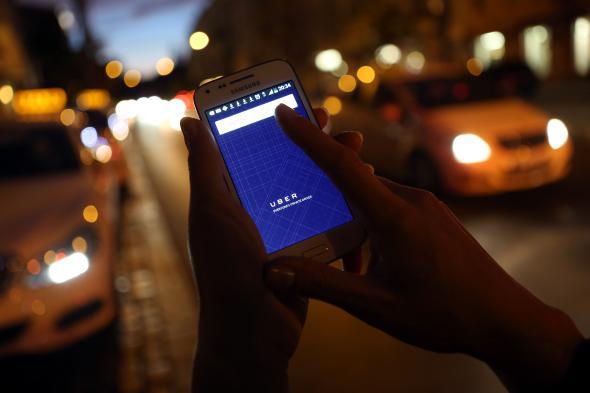No one sets out in the morning planning to be an angry bike commuter, the one banging a fist on a car’s hood after swerving to avoid being hit, but sometimes it’s the only way to tell a distracted motorist that he or she nearly pancaked you. Right now, Uber is previewing a future in which we’re banging our fists at an empty driver’s seat. As the Guardian reports, the self-driving Ubers currently tooling around San Francisco have a bike lane problem.
Uber has long envisioned replacing the human drivers on its platform with autonomous vehicles, an ambition it has been testing on the roads of Pittsburgh since this summer (with human backup drivers in tow). Last week, it rolled out an autonomous-vehicle pilot in San Francisco, but didn’t seek a permit from California, which regulates tests of self-driving cars, like Google’s. After one of the autonomous Ubers blew through a red light—the company says a human engineer was in control of the car at the time—the California Department of Motor Vehicles said it would crack down on Uber if it did not stop the testing and apply for a permit. Uber, being Uber, defied the threat and said it would continue testing its cars in San Francisco.
On Monday, the Guardian reported that Uber’s engineers were trying to fix a problem with the way its self-driving cars cross bike lanes when making right turns. That’s not a small issue in a dense environment like San Francisco, which has 200 miles of bike lanes and, hilliness aside, a robust population of bike commuters.
Like being doored, getting “right-hooked” is a first-order worry for anyone who uses bike lanes. Bicyclists die that way. Brian Wiedenmeier, the executive director of a local cycling advocacy group called the San Francisco Bicycle Coalition, rode in a self-driving Uber as part of a demonstration two days before the test launched and observed the vehicles taking a dangerous right-hook turn—that is, abruptly crossing over a bike lane to make a right turn in an intersection. (The safer practice is to check to see if bikes are approaching and, if possible, merge into the bike lane or parking lane before completing the right turn.) He says he shared his concern with Uber, which told the Guardian that it is now instructing its testers to take control of the cars to make right turns on streets with bike lanes.
It’s reassuring that Uber has made that move, and it’s true that self-driving cars, which may ultimately reduce vehicular deaths, will need to be tested on the streets in order to improve. I can’t help but think, however, that Uber would not have addressed this issue had a bicycling advocate not been present at its demonstration and had that bicycling advocate not been willing to make a public stink. And the autonomous Ubers’ initial trouble with bike lanes further deepens the sense that the future envisioned by self-driving car proponents—of a perfectly efficient urban latticework of autonomous-vehicle byways—is one that doesn’t account for the other people who share the road on foot or on bike. Or as Washington City Paper’s bike columnist recently tweeted:
It is likely for the greater good that companies like Uber and Google and General Motors are racing to perfect the self-driving car. But to do so they need to respect public space—something Uber, whose M.O. is to enter cities no matter their laws and later lobby for favorable regulations, has often not done. (Its argument in San Francisco is that its self-driving Ubers are closer to Teslas, which have an Autopilot mode, than to the Google car.) And they need to respect our roads as they are currently designed and used, not as they eventually might be, which means working with the agencies that design and regulate them, and not asking for forgiveness instead of permission.
Then again, if this is where we’re headed, American cities can do something, too: Give bicyclists protected bike lanes that cars can’t swerve into even if they want to.
